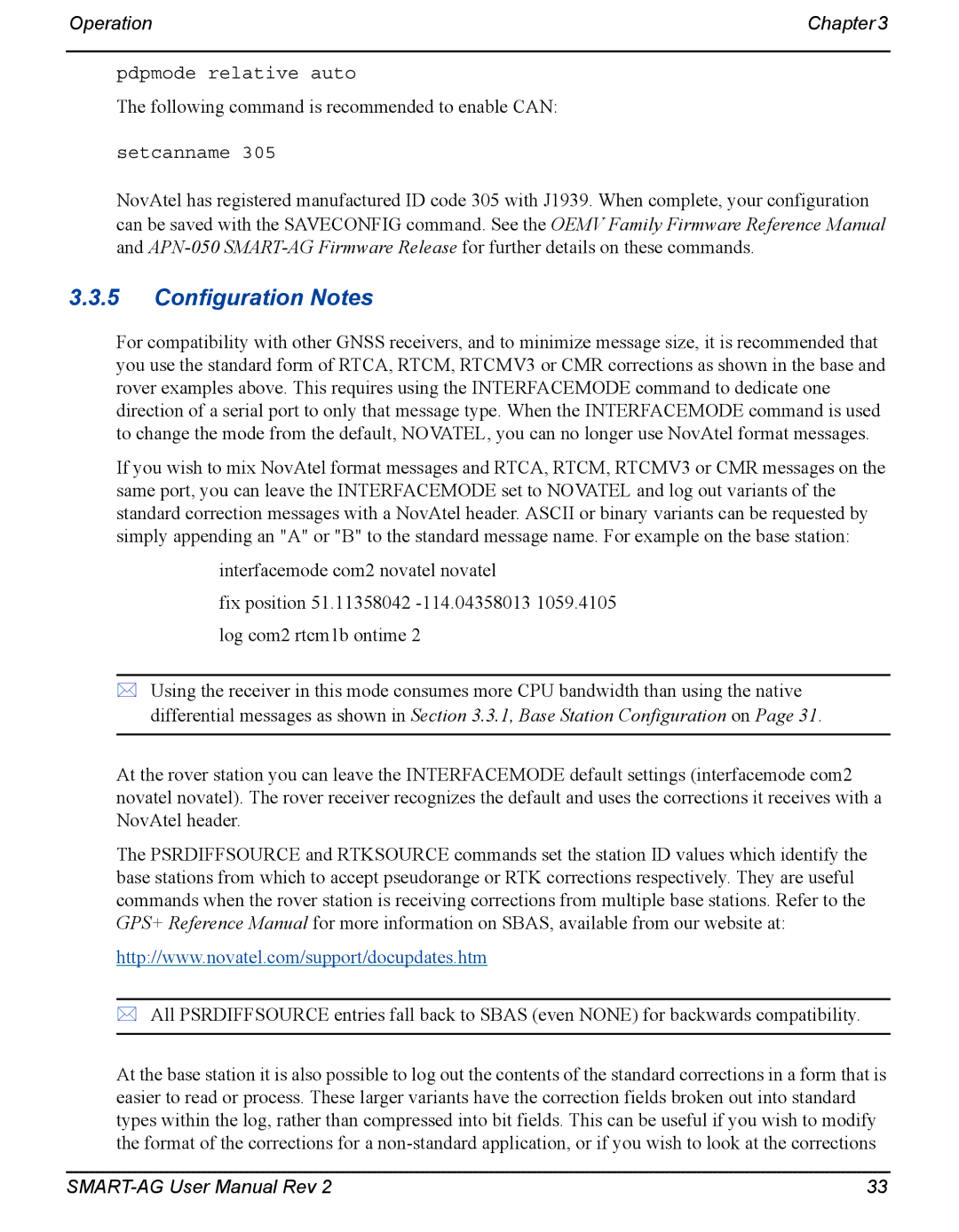
Operation | Chapter 3 |
pdpmode relative auto
The following command is recommended to enable CAN:
setcanname 305
NovAtel has registered manufactured ID code 305 with J1939. When complete, your configuration can be saved with the SAVECONFIG command. See the OEMV Family Firmware Reference Manual and
3.3.5Configuration Notes
For compatibility with other GNSS receivers, and to minimize message size, it is recommended that you use the standard form of RTCA, RTCM, RTCMV3 or CMR corrections as shown in the base and rover examples above. This requires using the INTERFACEMODE command to dedicate one direction of a serial port to only that message type. When the INTERFACEMODE command is used to change the mode from the default, NOVATEL, you can no longer use NovAtel format messages.
If you wish to mix NovAtel format messages and RTCA, RTCM, RTCMV3 or CMR messages on the same port, you can leave the INTERFACEMODE set to NOVATEL and log out variants of the standard correction messages with a NovAtel header. ASCII or binary variants can be requested by simply appending an "A" or "B" to the standard message name. For example on the base station:
interfacemode com2 novatel novatel
fix position 51.11358042
Using the receiver in this mode consumes more CPU bandwidth than using the native differential messages as shown in Section 3.3.1, Base Station Configuration on Page 31.
At the rover station you can leave the INTERFACEMODE default settings (interfacemode com2 novatel novatel). The rover receiver recognizes the default and uses the corrections it receives with a NovAtel header.
The PSRDIFFSOURCE and RTKSOURCE commands set the station ID values which identify the base stations from which to accept pseudorange or RTK corrections respectively. They are useful commands when the rover station is receiving corrections from multiple base stations. Refer to the GPS+ Reference Manual for more information on SBAS, available from our website at:
http://www.novatel.com/support/docupdates.htm
All PSRDIFFSOURCE entries fall back to SBAS (even NONE) for backwards compatibility.
At the base station it is also possible to log out the contents of the standard corrections in a form that is easier to read or process. These larger variants have the correction fields broken out into standard types within the log, rather than compressed into bit fields. This can be useful if you wish to modify the format of the corrections for a
33 |
